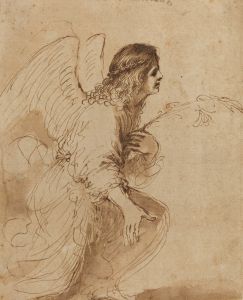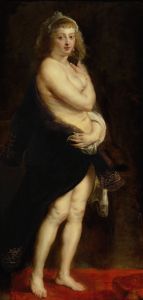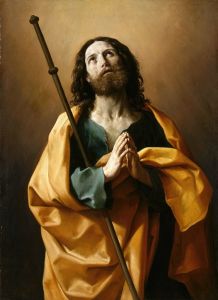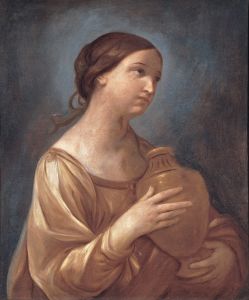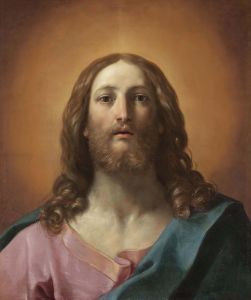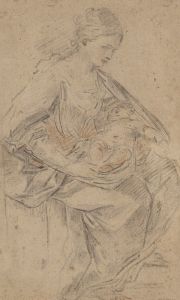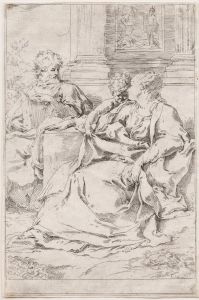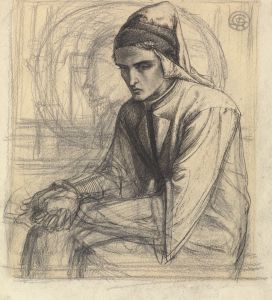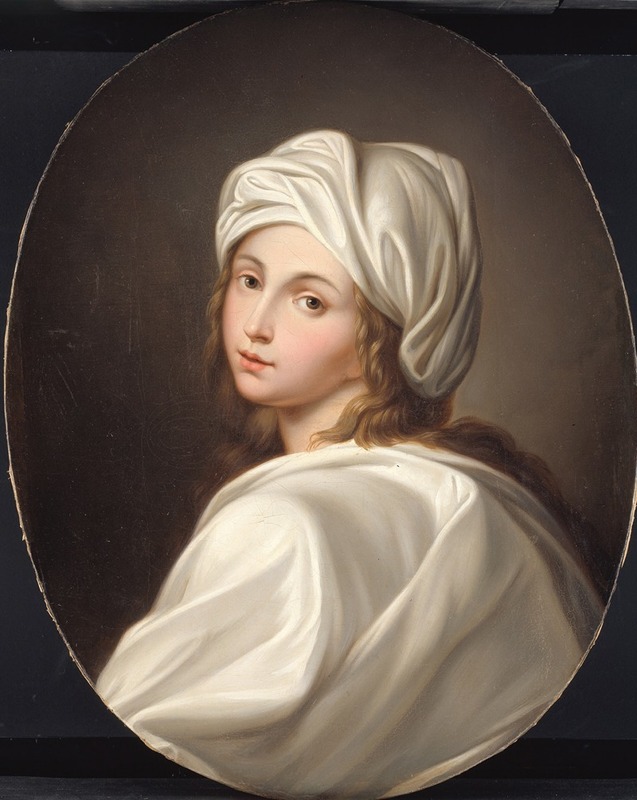
Portrait of Beatrice Cenci
A hand-painted replica of Guido Reni’s masterpiece Portrait of Beatrice Cenci, meticulously crafted by professional artists to capture the true essence of the original. Each piece is created with museum-quality canvas and rare mineral pigments, carefully painted by experienced artists with delicate brushstrokes and rich, layered colors to perfectly recreate the texture of the original artwork. Unlike machine-printed reproductions, this hand-painted version brings the painting to life, infused with the artist’s emotions and skill in every stroke. Whether for personal collection or home decoration, it instantly elevates the artistic atmosphere of any space.
The "Portrait of Beatrice Cenci" is a painting traditionally attributed to the Italian Baroque painter Guido Reni. This artwork is often associated with the tragic story of Beatrice Cenci, a young Roman noblewoman who was executed in 1599 for the murder of her abusive father, Francesco Cenci. The painting is believed to have been created in the early 17th century, although the exact date of its completion remains uncertain.
Guido Reni, born in 1575 in Bologna, was a prominent figure in the Baroque movement, known for his graceful and emotionally expressive style. His works often depicted religious and mythological subjects, characterized by their delicate use of color and light. Reni's reputation as a master painter was well established during his lifetime, and he received numerous commissions from religious and noble patrons across Italy.
The portrait of Beatrice Cenci is notable for its serene and contemplative depiction of the young woman. The painting captures Beatrice with a gentle expression, her head slightly tilted, and her eyes gazing softly into the distance. The use of light and shadow in the painting highlights her delicate features and creates a sense of depth and realism. The background is kept simple, drawing the viewer's attention to Beatrice's face and the subtle emotions conveyed through her expression.
While the attribution of the painting to Guido Reni is widely accepted, there is some debate among art historians regarding its authenticity. Some experts suggest that the painting may have been created by one of Reni's followers or by an artist influenced by his style. Despite these uncertainties, the painting remains an important piece in the study of Baroque portraiture and continues to be associated with Reni's body of work.
The story of Beatrice Cenci has captured the imagination of many over the centuries, inspiring numerous works of art, literature, and music. Her tragic tale of suffering and injustice resonated with audiences, and she became a symbol of resistance against tyranny and oppression. The painting of Beatrice Cenci, whether by Reni or another artist, contributes to the enduring legacy of her story, offering a visual representation that complements the narratives found in other artistic forms.
Today, the "Portrait of Beatrice Cenci" is housed in the Palazzo Barberini in Rome, part of the Galleria Nazionale d'Arte Antica's collection. The painting continues to attract visitors and scholars alike, who are drawn to its artistic beauty and the poignant story behind its subject. As with many historical artworks, the painting serves as a window into the past, inviting viewers to reflect on the complex interplay between art, history, and human emotion.







